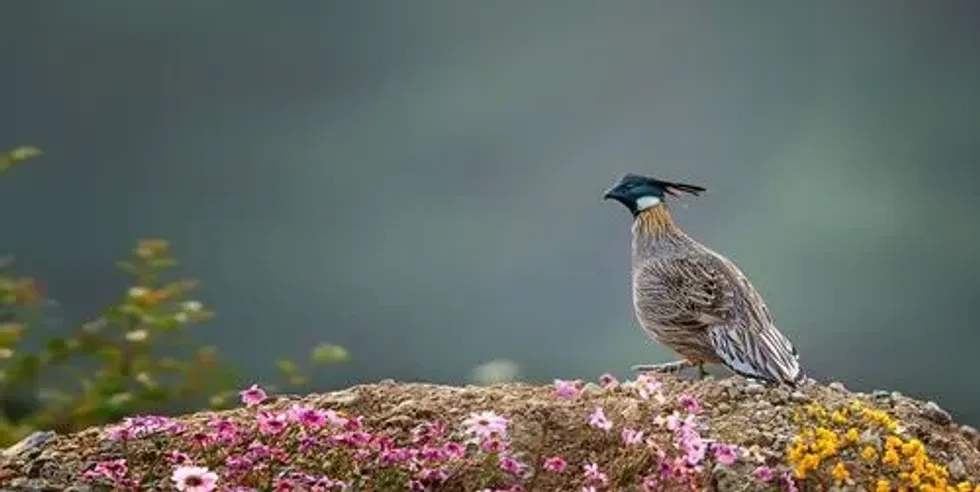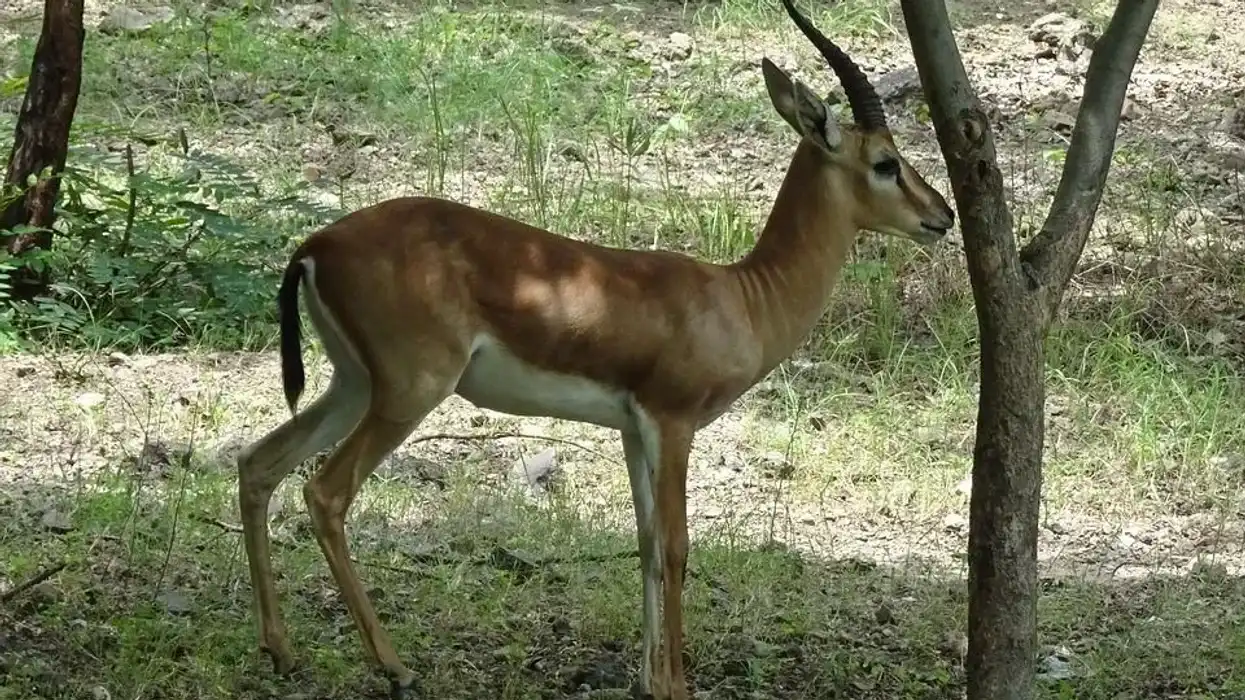The Koklass Pheasant, Pucrasia macrolopha, although called a pheasant, is truly related to grouses and is only a distant relative to the pheasants. Grouses are birds from the order Galliformes, which are heavy-bodied ground-feeding birds that include chicken and quail.
In the monotypic genus Pucrasia, the Koklass Pheasant is the only species. Koklass is an adapted species that has been put into three different groups of species and again divided into subspecies.
It is the only species in the genus Pucrasia to be divided into nine subspecies. It is found in a wide range from Asia, across Afghanistan to China. The range of the subspecies can be found at quite a distance from each other.
The Koklass Pheasant is part of the few species related to galliforms that regularly fly uphill and can fly at a time for many miles. Galliform species are not normally known to fly.
Read on for more facts, and check out the Argus Pheasant and Golden Pheasant too.
Koklass Pheasant Interesting Facts
What type of animal is a Koklass Pheasant?
The Koklass birds are a type of pheasant.
What class of animal does a Koklass Pheasant belong to?
Koklass pheasants fall under the Aves class in the family of Animalia.
How many Koklass Pheasants are there in the world?
The population of the Koklass birds is unknown at the moment but is estimated to be abundant in their natural habitats.
Where does a Koklass Pheasant live?
The beautiful little Koklass Pheasant is found in parts of the Himalayas and also in Afghanistan, India, Nepal, and the northeast parts of Tibet and China. In India, these birds are seen in Jammu and Kashmir, Himachal Pradesh, and Uttaranchal. These birds are confined to high-altitude areas with forests from Afghanistan to central Nepal.
What is a Koklass Pheasant's habitat?
The Koklass Pheasant birds require high vegetation areas as their habitats. Some of the subspecies prefer dense undergrowth in fir spruce forests and areas having Oak Deodars. By February, the bird is found at about 2000 m above sea level.
They are found in the same area day in and day out for feeding. They prefer high altitudes and forested areas. Different subspecies of the Koklass bird are not found in the same areas and are separated by long distances.
In captivity too, the Koklass Pheasant prefers large pens with grass for them to move about and shrubs for them to hide underneath. Plenty of vegetation is a must for the pens for the Koklass birds to thrive in captivity.
Who do Koklass Pheasants live with?
These brown-body species are usually monogamous and mate with their partners for life. They usually stay in a group and pair.
How long does a Koklass Pheasant live?
The average lifespan of the brown Koklass Pheasant is around 10 years.
How do they reproduce?
Koklass Pheasant females mature in their first year. The males and females mate around April when the females are 10-11 months old. In the breeding period, four to nine eggs are laid by the females.
Usually, the breeding is achieved by duos or trios. There are some cases when the female might choose more than one male. Males however mate with only one female.
The nest is made on the ground, under dense cover, with twigs and leaves. The Koklass Pheasant eggs laid by the female are colored creamy tan and have brown spots on the body of the eggs. Only the female species incubates the eggs for 25-27 days.
The chicks hatch right after that. Both the male and female help in rearing the chicks. The male and female, while rearing the chicks, like to stay in solitary and the chicks also are moody to an extent.
What is their conservation status?
There is no immediate danger to this species and they are found in abundance in their habitat. The IUCN has listed the Koklass species as Least Concern. They are only attacked by other animals, or killed by humans for sport.
Koklass Pheasant Fun Facts
What do Koklass Pheasants look like?
The male Koklass Pheasant is usually black with each feather on the body covered with a pale white border. The male is much larger than the female in size and also much more colorful.
The male has a metallic green face, head, throat, and crest. They have chestnut on the chest and breast and a streaked appearance to the body. A white cheek patch is found along with a rust throat, chest, and belly.
The backs of the body are mostly gray and the wings are brown and tan colored. The male species have a black beak and dark gray legs.
The female has a dark gray beak and the same dark gray legs. The female Koklass has a cream-brown body with dark markings, a cream-colored face, white cheeks, and a throat patch.
The female has white tips on the outside tail feathers. The female Koklass Pheasants have a fairly dull body. Both the male and female have wedge-shaped tails.
The chicks and the first-year adults look similar to the females. They only attain the dark male body coloration after they mature.

How cute are they?
The male of the Koklass Pheasants with their vivid coloration looks prettier and the chicks of the bird look very cute.
How do they communicate?
They communicate by moving their bodies and by sounds.
How big is a Koklass Pheasant?
The Koklass Pheasant range in terms of length is from 7-25 in (18-64 cm). All nine subspecies look fairly similar to each other.
How fast can a Koklass Pheasant move?
Pheasants are pretty quick. A common pheasant has speeds ranging from 8-10 mph. It is usually attained when they are startled by something.
How much does a Koklass Pheasant weigh?
The weight of an average Koklass Pheasant ranges from 2.2-3.1 lb (1025-1415 g).
What are the male and female names of the species?
The male and female sexes of the species are not given different names.
What would you call a baby Koklass Pheasant?
Baby Koklass Pheasants are called juveniles or chicks.
What do they eat?
These are usually vegetarian and consume pine nuts, pine shoots, bamboo shoots, and seeds. During warmer months, they live on insects such as ants. Their food also includes catkins, pollen, and fruits. Both male and female species of the bird along with the chicks during rearing search for food in the same area every time.
Are they aggressive?
The adult male and adult female of the species are only aggressive during rearing with the chicks. At other times, they are fairly peaceful.
Would they make a good pet?
They are a good kind of pet and are kept extensively in the countries where they are found. Koklass Pheasant care requires a large pen and dense vegetation for the birds to hide in the shrubs. Proper food should also be provided.
Did you know...
Koklass Pheasants look more similar to the grouses than regular pheasants.
Types of Koklass Pheasant
This polytypic species of Koklass Pheasant, Pucrasia macrolopha, have nine subspecies recognized so far.
They are the Indian Koklass Pheasant, Western Koklass Pheasant, Kashmir Koklass Pheasant, Nepal Koklass Pheasant, Meyer's Koklass Pheasant, Orange-collared Koklass Pheasant, Yellow-necked Koklass Pheasant, Joret's Koklass Pheasant, and Darwin's Koklass Pheasant. Each of these has the dark brown coloration common but has a few distinctive features attached to them.
The Kashmir Koklass Pheasant, Pucrasia macrolopha biddulphi, has its range from Kashmir east to Kullu in India.
The population of the Nepal Koklass Pheasant, Pucrasia macrolopha nipalensis, Western Koklass Pheasant, Pucrasia macrolopha castanea, and Indian Koklass Pheasant, Pucrasia macrolopha macrolopha, range only from the southern side of northwest and western Himalaya. All other five subspecies are found in China and Mongolia.
Few of the species of the genus Pucrasia had a population problem earlier, but the species have now been steadily increasing and are seen as abundant in their natural habitats.
Why are they called Koklass Pheasants?
Both the words Koklass and Pheasants from the name of Koklass Pheasants have been derived from the territorial call of the birds. The territorial call of the male is 'kok-kok-kok'.
Here at Kidadl, we have carefully created lots of interesting family-friendly animal facts for everyone to discover! Learn more about some other birds including the pheasant, or king quail.
You can even occupy yourself at home by drawing one on our Koklass pheasant coloring pages.










